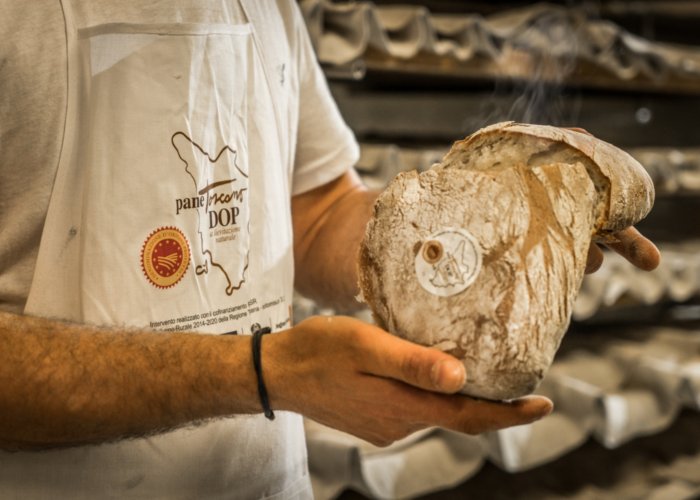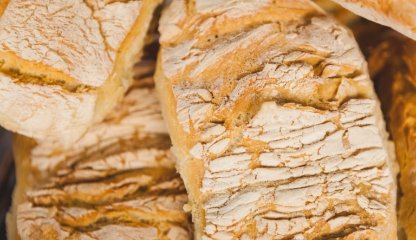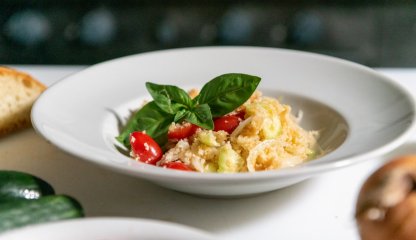Tuscan bread DOP



An ancient tradition, a unique taste
The typical character of Tuscan bread is due to its natural leavening, low-temperature baking, the noteworthy sizing and, especially, the total lack of salt (tasteless bread). This last feature dates to the 12th century, when at the start of the bitter fighting between Pisa and Florence, the proud maritime republic blocked the sale of salt to inland territories. The higher cost of salt therefore made it impossible to use it in the kitchen on a daily basis and it began to be used primarily for preserving pork meat for the year’s stock.
The wheat, flour and yeast used for making Tuscan bread DOP comes entirely from the Region of Tuscany and its production and packaging takes place here as well.
Characteristics
Tuscan bread DOP can be rectangular, oval and round, and is about 5-10 centimetres high, weighing between 500 grams and 2 kilograms. The crust is reddish-brown, somewhat crumbly and crunchy; the inside is soft, not tough to chew, contains a good amount of water even a few days after baking and has an ivory-white colour, with a slight aroma of toasted hazelnuts. The taste is strictly “empty” because salt is 100% percent absent from the dough.
The characteristics of its production make it a highly digestible product, thanks to the use of a mix of low-gluten flours, with nutrition coming from the wheat germ itself, as well as salt not being among the ingredients.
Tuscan bread DOP can be rectangular, oval and round, and is about 5-10 centimetres high, weighing between 500 grams and 2 kilograms. The crust is reddish-brown, somewhat crumbly and crunchy; the inside is soft, not tough to chew, contains a good amount of water even a few days after baking and has an ivory-white colour, with a slight aroma of toasted hazelnuts. The taste is strictly “empty” because salt is 100% percent absent from the dough.
The characteristics of its production make it a highly digestible product, thanks to the use of a mix of low-gluten flours, with nutrition coming from the wheat germ itself, as well as salt not being among the ingredients.
Gastronomy
Poverty and an attention to avoiding waste are essential elements in the millions of delicious uses of this stale bread which characterizes the popular and traditional Tuscan cuisine: just think of panzanella, made as early as the 1500s, bruschetta or fettunta, ribollita, cacciucco, acquacotta or pappa al pomodoro.
The blandness of the bread pairs perfectly with Tuscany’s typically flavourful cuisine, highlighting the taste of the dishes; the inside of the bread, with abundant air cavities that form as the dough rises, also pairs wonderfully with the thousands of condiments that the immense use of excellent local oil has always inspired.
Info: panetoscano.net
Poverty and an attention to avoiding waste are essential elements in the millions of delicious uses of this stale bread which characterizes the popular and traditional Tuscan cuisine: just think of panzanella, made as early as the 1500s, bruschetta or fettunta, ribollita, cacciucco, acquacotta or pappa al pomodoro.
The blandness of the bread pairs perfectly with Tuscany’s typically flavourful cuisine, highlighting the taste of the dishes; the inside of the bread, with abundant air cavities that form as the dough rises, also pairs wonderfully with the thousands of condiments that the immense use of excellent local oil has always inspired.
Info: panetoscano.net



